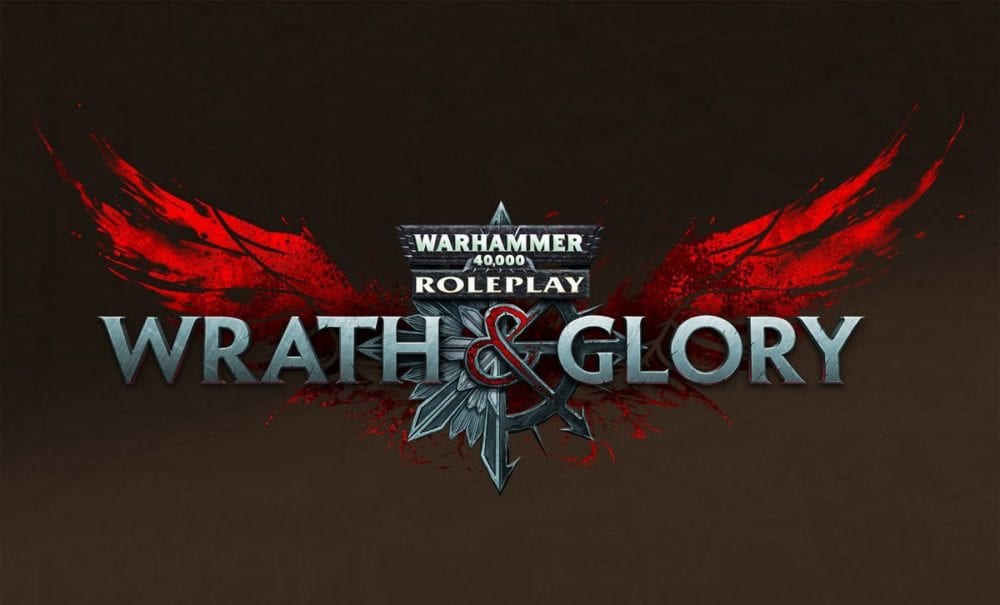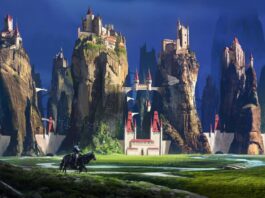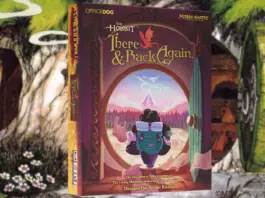Hello again, dear readers. Today I bring to you something long in the making — the re-release of the Warhammer 40K RPG, Wrath & Glory. It originally came out in 2018 to mixed reception. Since then it has passed into the hands of another publisher Cubicle 7, who has released a new version of the core rulebook. Everyone who bought the original version has received the new one for free. Is it an improvement? Well, let’s look at what the first released did.
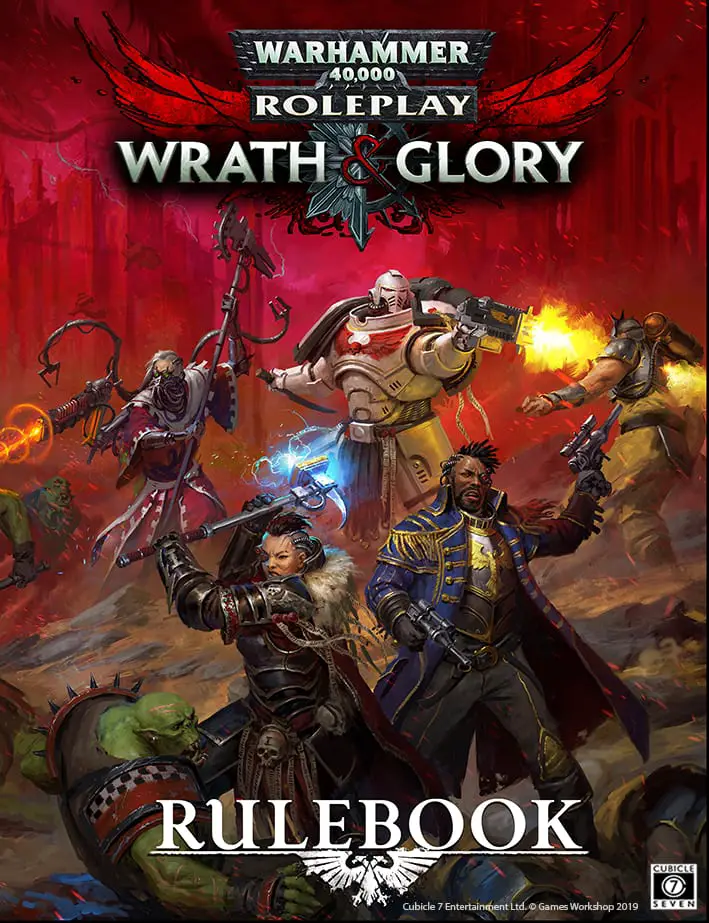
Wrath & Glory had to step into the boots left behind by several WH40K systems from Fantasy Flight Games. Dark Heresy, Rogue Trader, Black Crusade, Only War and Deathwatch. I wrote about Dark Heresy on this very site some years ago. Unlike those five games, which focused on different Imperial groups or (in Black Crusade) followers of Chaos, Wrath & Glory is a universal system that can cover all sorts of species, groups and stories.
Unlike its predecessors, Wrath & Glory uses a dice pool system. Rolls are made by assembling a number of six-sided die. Results of 1, 2 and 3 are failures, 4 and 5 are successes or “icons”. A 6 is an “Exalted icon”, which gives us two successes or can be put aside for additional benefits.
How did that work out? Well, opinions vary. Fortunately, I ran a short but eventful campaign using the system, so I can say to have first-hand experience. The results were about what I had expected: the game was versatile, but shallow. Covering everything from the Imperial Guard… sorry, Astra Militarum to Primaris Marines, up to and including Eldar and Orks, means none of those options get a lot of material.
Here it should be noted that I didn’t use the setting as presented in the rulebook. Our game took place in the setting of Dark Heresy 1st edition, the Calixis sector long before the Great Rift, Dark Imperium, Roboute Guilliman’s return or any such events. Despite that, it wasn’t difficult to adapt the rules. We found the system to be functional, but lacking in options. Has the new release addressed these concerns? Let’s start from the beginning.
Rules

We will start, as a player picking up the book likely will, with character generation. It works much as it did in the original book, but it’s clearer and simpler. Let’s sum it up for people that haven’t dealt with Wrath & Glory before.
Our work starts by picking a Framework. This is something done by all players and the GM and simply means deciding “what kind of group are we playing?”. After all, if one player picks an Imperial Guardswoman while another picks an Ork Boy and someone else picks an Aeldari Corsair, it doesn’t make a whole lot of sense.
Framework also includes the game’s Tier. There are four of them and they determined the player characters’ power levels and the scope of play. On Tier One, player characters are fairly mundane and common — Imperial Guards, gangers, Ork Boyz, et cetera. The conflicts they deal with are likewise down to earth. On Tier Four, the players can be Primaris Marines or Inquisitors and deal with accordingly considerable threats. Our Tier determines the available archetypes and starting experience.
Readers who are familiar with the original version of the book might notice that I mentioned four tiers, rather than five. That’s because only four are presented as options. “Tier Five” is found in a sidebar for custom, non-standard tiers, alongside a “Tier Zero” for very inexperienced characters. I suspect it was done for clarity’s sake, as the first edition didn’t actually have any Tier Five archetypes.
We then choose an Archetype. This might arguably be the central point of character creation. Archetypes are aligned by species and faction. We can play humans, Astartes, Aeldari and Orks. Humans can be Imperial agents of various strikes, outlaws or others. Aeldari can come from Craftworlds or not, while Orks… are just Orks.
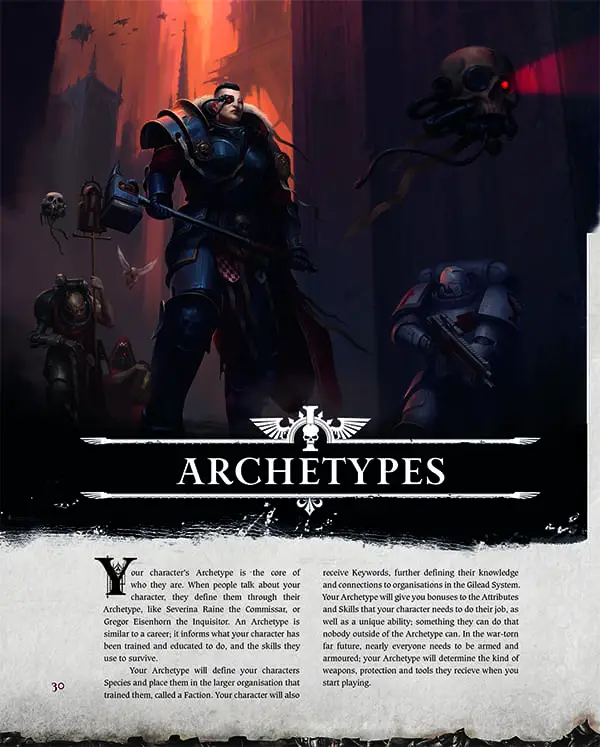
An archetype is a package of mechanical abilities and narrative identity. It describes our character’s place in the setting, gives them one unique ability and a number of skills and attributes. All of it in a package with a listed XP cost for simplicity. Some readers will notice that I have made no mention of Chaos archetypes. They have been moved to a sidebar explaining how to turn various human and Astartes ones into servants of the Ruinous Powers.
Moving on, we spend what XP we have left on skills and attributes. Nothing out of the ordinary here. Where we see a large improvement compared to the previous version is talents. There are simply far more of them, which helps create unique characters and alleviates a major concern with the original book.
At the end of the character creation section is one of the more in-depth changes in the re-release. That is to say, advanced character creation that does not involve archetypes. Instead, we simply build our character from scratch, selecting our faction and species, then spend our XP as we see fit.
This is a welcome change, as it helps people whose concepts simply do not fit the archetypes as they appear. I do hope that we see further content with more archetypes, however. Taking extra talents to make up for lack of archetypes is all well and good, but not quite the same.
Aside from this major change, the changes to the rules made by the re-release are mostly in terms of clean-up. Some rather fiddly rules have been removed, such as those concerning a cap on 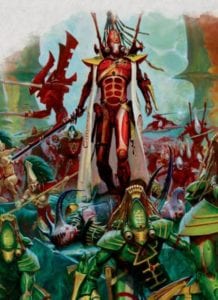 bonus dice based on the game’s tier.
bonus dice based on the game’s tier.
Another welcome change is more Ascension packages. In the first release, there were just two: Stay the Course, which just upgraded our existing abilities, and Psychic Revelations, which gave us psychic powers on top of whatever else we had. The re-release adds four more, such as being under the influence of a powerful patron or even betraying our faction to gain favor with another one.
There are other, more minor adjustments to the rules. The combat rules, for instance, are largely the same, but there are more available actions listed. For instance, suppressive fire is now its own distinctive action. You can shoot through cover, which removes its defence bonus and replaces it with an armor bonus — useful if you have a powerful weapon that can pierce it. All of this adds up into a more varied experience.
Setting
Wrath & Glory takes place in the Dark Imperium, separated from Terra by the Great Rift. This cuts it off from the light of the Astronomican, rendering Warp travel impossible. In addition to this, psykers have been cropping up in increased numbers. So it’s a very grimdark WH40K sort of place.
The re-release goes into a bit more detail about the setting, in general. Much of it comes in the descriptions of factions that player characters can hail from. Others elsewhere. It’s something I can appreciate, as the WH40K setting is daunting, to put it mildly. The original book was too brisk and vague about world-building.
It’s hard for me to say how approachable the description of the Gilead system is to a newcomer. I’m quite familiar with the larger setting, but moreover I did not use the one presented in the 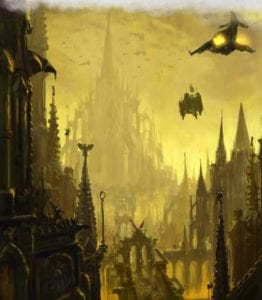 original book. Still, it continues the tradition of presenting us with a small slice of the galaxy — smaller than in the FFG systems, in fact, as they covered sectors, not systems. It focuses on the problems plaguing it: being cut off from the Astronomican, growing number of psykers and troubles with supply lines that, among other things, make ammunition hard to come by.
original book. Still, it continues the tradition of presenting us with a small slice of the galaxy — smaller than in the FFG systems, in fact, as they covered sectors, not systems. It focuses on the problems plaguing it: being cut off from the Astronomican, growing number of psykers and troubles with supply lines that, among other things, make ammunition hard to come by.
Presentation
Many complaints about the original rulebook concerned layout and editing. I shared those complaints — the book was simply difficult to use. Information was in counter-intuitive places and finding any given piece of it could be difficult. Moreover, it was sometimes contradictory. For instance, the attribute cap for tier 2 characters was presented twice in two different tables… and was different in each.
I’m happy to say that the new book is a substantial improvement in this area. Everything is laid out better in simpler and clearer ways, so it’s easier to find our way around. Some sections use a method of presenting the most basic content first, then following up with more optional or complicated ones.
Editing mistakes, unfortunately, persist. Some archetypes are reportedly listed with incorrect XP costs compared to the attributes and skills they bring with them. Something I’ve noticed myself are discrepancies on the weapons list. A chainsword has the Chain and Chaos keywords. A chainaxe has the Blade and [Any] keywords. This doesn’t really add up and it’s not the only one such case. It’s not a huge deal, of course, as the keywords are there for information purposes rather than hard and fast rules. But it doesn’t make a good impression.
A far more noticeable error is in the bestiary. The entry for Gretchin contains a sidebar for Ork Runtherdz… except the description is that of a Meganob from a few entries up. We can hope that the new writers are gathering feedback on the subject and will apply it.
Gameplay
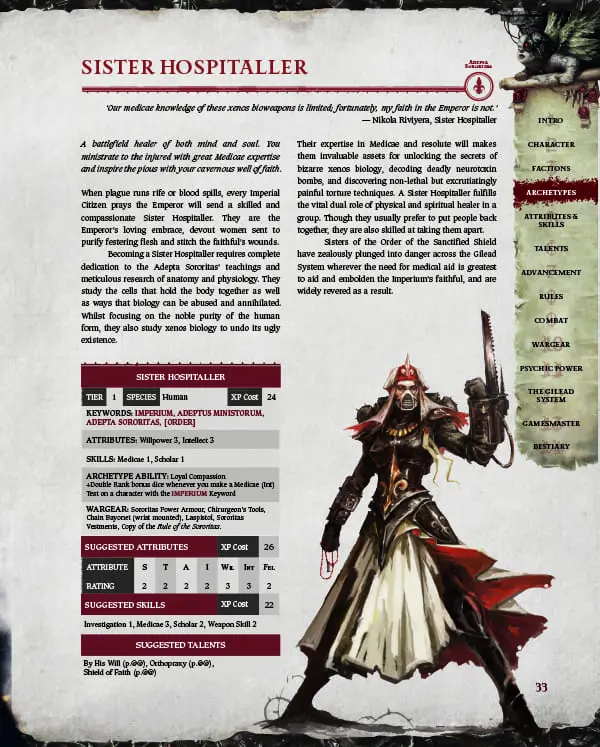
Having said all this, the big question is if the game plays well and how the re-release helps with it. There are a few notable changes.
One is that with archetypes being optional (if encouraged), it’s easier to create the character we envisioned. My players made a Tempestus Scion, a Rogue Psyker and a Sister Hospitaller. All of 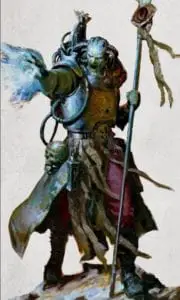 them were members of an elite police force in Hive Sibellus on planet Scintilla, however. So while the Rogue Psyker was indeed one, the other two kept the mechanics while ignoring the background.
them were members of an elite police force in Hive Sibellus on planet Scintilla, however. So while the Rogue Psyker was indeed one, the other two kept the mechanics while ignoring the background.
The Tempestus Scion archetype worked well for someone who was a member of a SWAT team, essentially. The Sister Hospitaller archetype needed to replace its wargear in order to suit a forensics doctor. The original book provided advice for customizing archetypes this way. The new one seems to lean on encouraging advanced character creation in such cases. Perhaps if we had started with this book rather than the original one, the player would have simply build his character from scratch. Of course, since the Sister Hospitaller is a Tier 1 archetype, she had to use an ascension package to fit a Tier 2 game.
A concern that I had when playing was the relative lack of variety in character creation. Perhaps it’s because I had played Dark Heresy earlier. Of course, I will be the first to admit that DH has many options that are, frankly, superfluous and unlikely to see use. But flattening all kinds of humans, Astartes, Orks and Eldar into one system still has consequences, and I hope that the expanded talent list will help counteract it.
Navigating the original book was, as mentioned, not easy. The new book seems notably easier to find one’s way around in. It’s difficult to say what a difference it would make in play, but it’s much easier to read. So I think it would save me some flipping back and forth.
Verdict
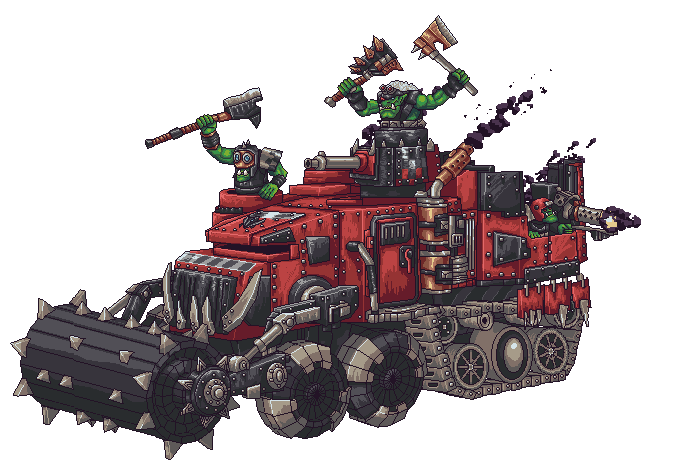
Wrath & Glory was a solid system when it came out, but with a troubled release and issues with scope. The re-release certainly won’t help with feeling as though it’s stretched too thin. This is just something we can take or leave as our tastes and needs dictate. But the new book does solve other issues with the game. Another test lies before Cubicle 7 now, however. Will they deliver new content that will round out the game and provide more options? Emperor willing. But for now, Wrath & Glory is worth considering for those who want to play in the grim future of the 41st Millenium.
[rwp_box_criteria id=”0″]
You can pre-order the PDF of Wrath & Glory, as well as the released adventures and other supplements, on DriveThruRPG or the Cubicle 7 shop. Physical copies can be pre-ordered here.
Thanks to Cubicle 7 for the images and review copy used in this review

